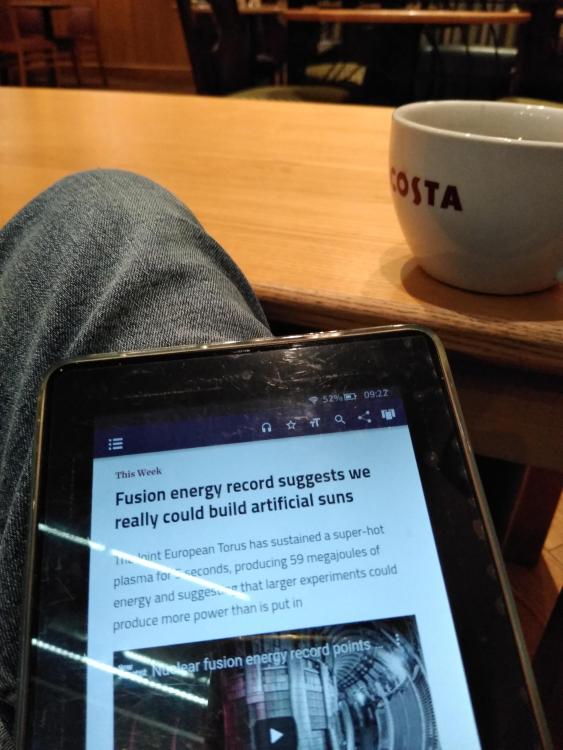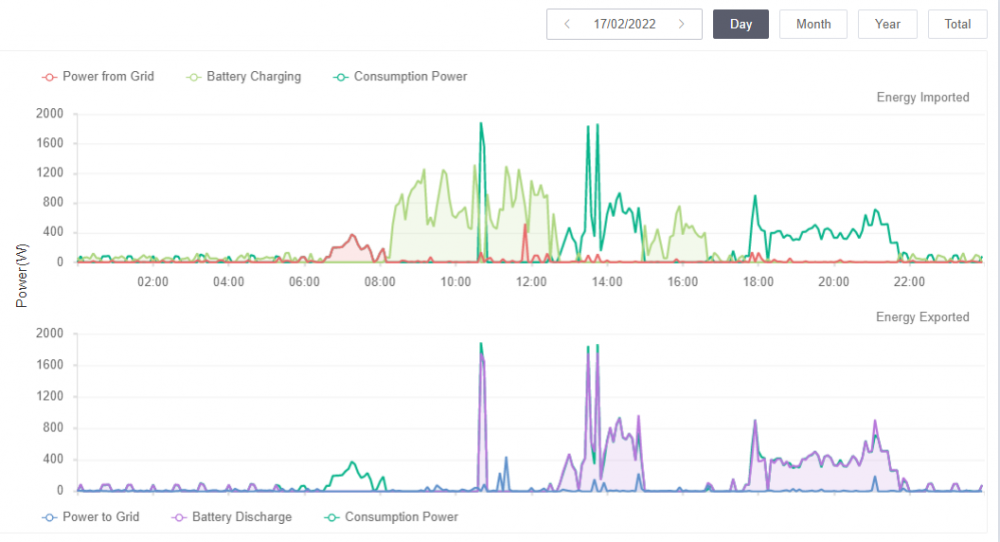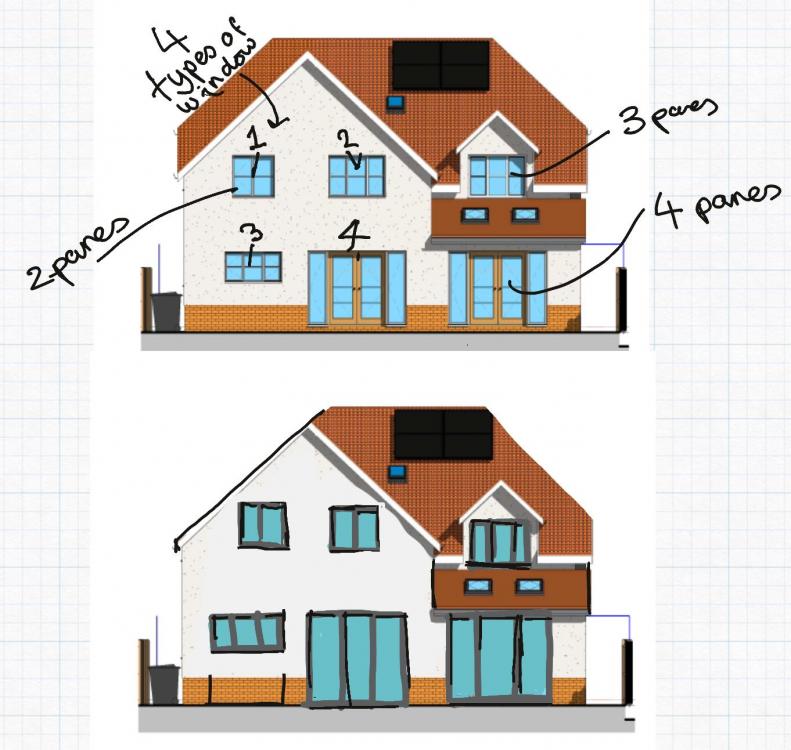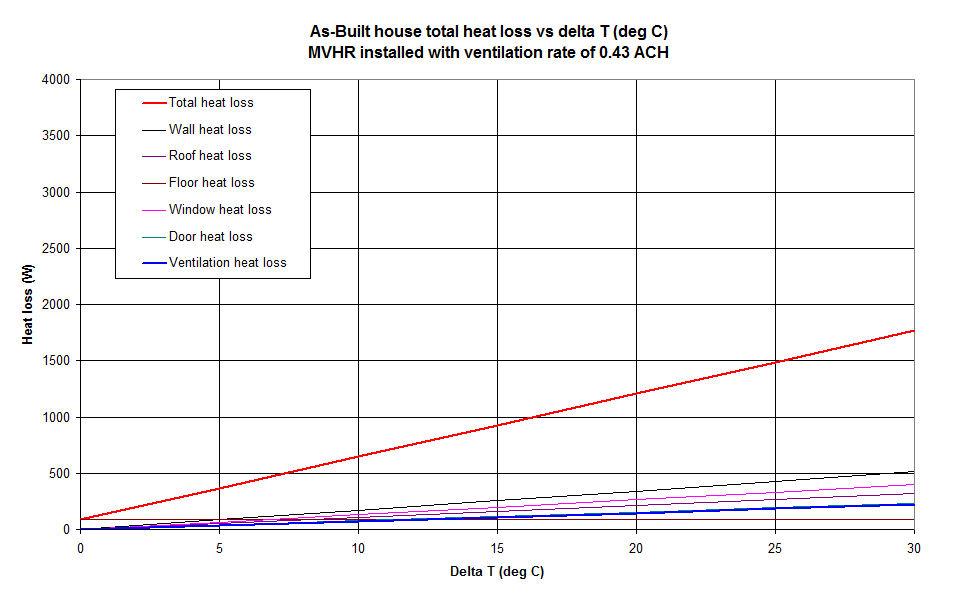Leaderboard
Popular Content
Showing content with the highest reputation on 02/18/22 in all areas
-
After pondering battery storage for many years, and then the energy prices rocketing this last year, i finally decided to give energy storage a shot, working out how it would sit financially was extremely difficult, and a little bit of a finger in the wind, but as the batteries have a designed lifetime of 15years now, and energy prices rarely go down, I figured it would pay for itself with some profit over the long term, whilst also reducing my carbon emissions and reliance on the grid. As i'm just dipping my toe in, i've decided to just get a single US3000C Pylontech Battery for now, meaning that the max discharge W is around 1.8kW. I will see how this fits in, which will cover most of my loads, and if I see fit I can add a US2000C later on to give the full 3kW discharge. Went for a Solis AC Coupled 5th Generation Inverter, the graphs it produces are really informative. Will get round to taking the rackmount bits off at some point. Example of the graphs available: I will add bits to this thread over time about electric consumption. My annual consumption at the moment is looking to be around 1200-1300kWh before the battery, Export sitting around 2400kWh as excess from the solar farm, so be interesting to see what these figures do over the next 12 months. Cost so far £2450 including installation which was £650. An additional US2000C will be £748 if i decide to go ahead.2 points
-
Ok so I’ve done 21 turns as per @Nickfromwales advice. Here goes… they’re all from here: https://www.radiatoroutlet.co.uk/1800-x-383mm-white-vertical-traditional-3-column-radiator tails/valves from screwfix. TRVs from Hive. @tonyshouse I don’t need 2 bar, was just a check to see if they were holding pressure ok. Will pressurise properly when I know they work.2 points
-
I like the porch. It is such an unrecognised means of retaining heat in the house. It is rather large, but so is the house. You could retain visitors in it if they fall between the 'go-away' and please come in' categories. Yes it is expensive but this sort of house needs some 'wow' from outside and this is it. A trick of architectural design is that a building is usually favourably noted for one thing....and that may be a colour or the main front feature. You will feel good every time you see it.2 points
-
Back with an update after another (and final) round of updates with our architect. The main changes we've made are around the palette of materials and colour choices as the design is fairly contemporary/modern but the choice of traditional materials (mainly brick) and colours (red/white) was coming across as quite brutal/intimidating? We asked an open ended question to the architect and this was the recommendation on what they'd do if it was their house. I hadn't really considered going for a render finish in white and grey roof, but I do have to say - it looks quite good on the renders. Plus it matches what the next door neighbours did, so will be an easier sell to the planners. Other changes are more subtle like increasing the roof overhang slightly so we can fit some external lighting on, making provisions for solar panels on the south side of the roof (not reflected on the renders) and some internal changes to the roof design. Basically opted to simplify internally and go for a raised truss roof which will allow us to keep the costs low (expensive steel not required), and the missus wasn't really into the whole vaulted ceilings look. Settled on this now and the 'crisp white offset by the grey' look has really grown on me in the last 2 weeks since we first saw it.2 points
-
The budget is tight, perhaps the garden room won't add much value. I couldnt say for sure. What is invaluable is the experience, even if you break even you'll have collected a mountain of knowledge for the real deal later. I'm afraid I know little about conservation areas although if planners are of much the same breed everywhere it needs to be either "exceptional design quality" or completely plesant and innocious. The latter is true here IMO if you bin the ugly dormer(s). As to the ensuite, a shower would ideally be about 2.1m high minimum. Can you make this work? a shower tray recessedinto the floor might help. A bed can happily live with the back against a 1.2m knee wall and a toilet not much more. I'll stick to my guns on your architect. They've shown a good understanding of the flow of a building, how light penetrates, where you want it (eg. kitchen) and where you don't ( by the tv)and how to route services, pipes etc. A pencil drawing with some water colour washing would probably convince a lot of planners.2 points
-
Amazing project by the way. Love the building and what you're trying to do. I'm rather jealous (or is that just Stockholm syndrome from difficult projects?). Anyway, yes there are varied views and this is partly because we still don't fully understand the hygrothermal nature of buildings. However, there is a certain consensus building, especially with regards to retrofit in older buildings which is evidence based as opposed to firmly held views. I think the situation is improving from where it was even 5 years ago. Generally, it does seem to be falling on the side of moisture open materials to reduce risks. I'm with you on much of this although I'd say the one thing missing is salts and their effect on moisture within the walls. Your 1 st meter or so of dampness is likely to contain quite a bit which will soak up more moisture and delay its drying out, but with also add to the amplitude of damp/dry cycles. Some of this is evidence based, some of it isn't. I think there is a fair wind blowing in the direction of the principle of not to tank the inside of the wall with imperveous materials on an old building such as yours. When you speak of bringing damp outside air in and encouraging evaporation to the warmer void which would otherwise permeate outwards does not follow the typical laws of vapour pressure in buildings. Typically, although not exclusively or always, a house will have a higher vapour pressure to the inside than to the outside. This typically means that the moisture will travel outwards where the air is for the most part dryer. So whilst the wall may be able to dry to the inside, this vapour will travel towards the outside, by whichever means of least resistance - this may be through the walls, or through the ventilated cavity, or even a window. I'd like to clarify, just in case it's needed, that I'm not suggesting your solution is wrong. I'm merely pointing out that there may be problematic details in what you're proposing that unecessarily add risk to your solution when it comes to moisture. For me the consensus is pretty clear. You either go for a solution that is attached directly to the wall and takes the form of a moisture open (vapour and capillary open material),, if suitable on your wall depending on its dampness, or you go for a separate inner leaf which provides a ventilation cavity, which may use a vcl, or maybe not. I do hope they're of assistance because I know what a pain this process can be. An inner timber structure could very well work, and as I said, I'm not dissuading you from this. The question is more what the correct detail needs to be for the buildup. It's because we're talking a completely different context. To quote another source (link below): Link: https://historicengland.org.uk/images-books/publications/eehb-insulating-solid-walls/heag081-solid-walls/ Another link is re solid wall insulation is Scotland but a bit more out of date: https://www.changeworks.org.uk/sites/default/files/Solid_Wall_Insulation_in_Scotland.pdf Do not confuse modern new buildups with what might work on a historic building - that's what has caused so much historical damage in the first place. This is from one of the referenced sources of the current government best practice guidance I linked to. If you read the document I link to above from Scotland, a similar point is mentioned: that in some circumstances using thinner IWI is better due to the problems associated with cold bridgig etc. so more insulation becomes counter productive. Given the value you can get from your existing 600mm walls, have you looked at using a moisture open solution that could go directly on the wall? This to me seems like an ideal candidate, at least worthy of serious consideration as it seems to mitigate many of the issues you face with having an internal stud wall IWI. It is also supported by a sigificant volume of current guidance. I appreciate this is different from @Gus Potter's excellent suggestion, and think it would be worthwhile exploring detailed buildups with each system to compare the various costs, complexities, outcome and viability of each side by side. There is also the slightly crazy option of leaving the wall uninsulated for now until the walls dry out and then consider your options further down the road.2 points
-
The light in a given area is measured in Lux. This unit better represents perceived brightness and can be provided as a single figure recommended for a particular task. One lux equals one lumen per square meter so an 11m2 room as above, with a 1000 lumen light source would provide around 90 lux. Something like 200 would be more typical for a general domestic setting but it depends on the type of room. Here is one table of recommended lux levels for different activities. 90 Lux might just be enough in an adult bedroom. Nudge Nudge. Oh, and one more thing... it also depends on the age of the occupants. Over 65's require double those figures.2 points
-
Wasn't sure where to post this but here's our observations after storm Eunice passed through. Initially we watched the storm gather, we could see that that the wind was strong but from inside there was no indication, no sound, no draughts. As the wind picked up something we were not expecting happened, we could hear and feel a draught. We have two fairly large sliders and at the peak of the storm, the wind was pushing against the slider so much that there was airflow between the slider and the fixed pane. Not much and not continuous but it was definitely happening. Our air test was done to passive standards (positive and negative pressure) so we're fairly certain there is no problem with the sliders because if there was then the negative pressure test would have exposed that. Anyone have a contradictory view? A short time later we had a power cut , that doesn't matter. The house is warm, the Sunamp is fully charged (minus two showers), what could go wrong? Well, we're fully electric so there was no cup of tea to sup whilst watching the storm play out. Information gleaned is that the power will be out for over 48hrs And of course there's no heating. But what does that matter because the house is toasty warm at about 21.5° and we've not had any heating on for days. And the house is almost airtight, apart from the few blasts that squeezed through the sliders. Thanks to @Adrian Walker's advice we have a CO2 monitor, well we bought a couple. It was quite amazing how quickly the CO2 PPM started to increase after the power cut. Obviously the MVHR was having a bit of "quiet time", so now we had a toasty warm passive house that was not working as planned. As night drew in it got worse because lots of candles were lit. The only solution was to open some windows and get some airflow. Out of interest, it was only the monitors that informed us of the poor air quality, it wasn't something we sensed. So, we have a toasty warm passive house but with no airflow so a couple of the 'tilt and turn' windows on opposite sides of the house were tilted. That fixed things, air quality wise, very quickly but it also meant the passive house was now going to cool down more rapidly than planned. There are no heating options, apart from the bio-ethanol fire) so we were getting ready to break out the cold weather gear. Fortunately power was restored about 12 hours after the cut. We have a fair amount of PV, and it was quite a sunny storm but of course the PV trips off in a power cut. We were meant to have a battery system but the that didn't happen. The M&E individual who specced that (and didn't provide) had wired in an emergency power supply from which we could run the fridge and freezer in the event of a power outage, which was a pretty smart idea, shame it never happened, but actually my advise to anyone building to passive standards, if they have a battery system then make sure that the MVHR will run off the batteries. That's the main thing we've learned. If you have built to passive standard and have a battery system, make sure your MVHR can run from the batteries in the event of a power cut, I suspect most battery systems will power an MVHR unit for ages. Without that, you're not in a passive house anymore. Oh, and we had the first BBQ of the season this evening. Bit nippy!1 point
-
It’s like buying TV’s some like Sony, some LG etc My house has 2 Charnwood stoves, been in 20 years (ish) never had a problem1 point
-
We run to 2.5 bar cold on the day. If it can’t hold that we drain and redo. If it holds, we run it scorching hot and check again for final operation.1 point
-
FYI, I have been fitting valves to rads for north of 25 years, and have never ( not once ) had to or would use Fernox ( aka clear silicone ) to make a rad valve off. PTFE and experience is all you need, end of. Fernox is a bodge.1 point
-
Hi there Yes exciting indeed - although I’ve got to be honest, it’s been disappointing to discover how difficult it is to find engineers and technical architects that know this product and can help with the building regs drawings etc. Low point of the week- calling an architect and him asking me “what is ICF”?!?!1 point
-
Also try the reset button, top left button under the lcd. press and hold agree with Nick, boiler is pretty old so maybe worth phoning the service company who put stickers on the boiler1 point
-
Isolate the electric supply and check all cable connections. Pull connectors off and push back on ( carefully and slowly ) a couple of times, and retry. After that you’re on the web for a PCB I’m afraid. Judging by the age of the boiler, you were probably on borrowed time with the PCB anyhoo1 point
-
1 point
-
Have a search in the heating section a thread on there which sounds very similar to yours, was posted after the last storm.1 point
-
Hard to guess without seeing the plans, but if I was going to dangle a couple of people off it, I'd probably use 6x2 doubled up. The strength is in the depth; 4 inches isn't enough over that span IMO.1 point
-
It just makes no sense to me, I’m guessing it’s expensive; but you aren’t going to sit in there and it doesn’t bring light into the house as it leads into a dull corridor. To me that’s wasteful and not used well. If you had asked me for a stunning entrance porch, I’d have made that thing do all kinds of things. It would have been the focus of the house. to me this looks like you are just displaying to people that you have a porch, it isn’t for you it’s for some random walking past.1 point
-
@JAS-Build unfortunately @BenS hasn't been on since 20171 point
-
Just today i got a ball park cost for a turn key off grid system. Enough for a house and a workshop. £40K + VAT. That included everything required except installation. No user input apart from keeping fuel in the tank. What i found interesting was although a significant capital cost, was that that the cost per KWH was very low. In their best example, 9p per kwh. Ok, its PR and best case, but given current prices, and the near certainty they can only go one way, in your position may be worthy of consideration. Especially if its going to cost £15-20k for a grid connection. Who will then charge you 30p per Kwh for ever + price increases.. They quoted me the 15000 version, which is overkill for a house, so would expect a slightly lower cost. https://www.energy-solutions.co.uk/guides/off-grid-guide.pdf You just have to get past a diesel genset being part of the solution......................1 point
-
If you go with that 2021 letter, you will be time barred (within 3 months of proof of completion) You need to ask WHY Glasgow city will not issue a temporary habitation? If they really won't then it is wait for completion ot wait for council tax valuation.1 point
-
So many options, Douglas fir, oak, larch would all be great but nothing wrong with pine and spruce etc. if it’s treated and not highly loaded. Really depends on the design and how the timber will be used and joined etc. decking timber is good as it’s kiln dried and pressure treated so stable and wellprotected1 point
-
Already done with blow torch. No it would not sustain fire on its own in my tests.1 point
-
1 point
-
1 point
-
You can buy new doors, and also buy door covers https://www.bes.co.uk/electric-meter-box-replacement-door-h-550mm-x-w-381mm-16880/?ref=gs&gclid=Cj0KCQiApL2QBhC8ARIsAGMm-KGYKgn0XzSvpHIY0c_0CEjLc6_xq4LHdA9msUelg16-ei26EkeNGmoaAgetEALw_wcB https://www.meterboxesdirect.co.uk/meter-box-spares.html1 point
-
1 point
-
1 point
-
Not many power cuts round where I am either, have had the odd one over the years, but nothing more than a minute off, so I didn't have the backup socket wired in, though I could do that myself later down the line. Yeah the Tesla Powerwall is absolutely the best value for money, but for me that amount of storage is just far too much. Yesterday had the washer on, dryer afterwards and cooking my dinner and tea, and used very little from the grid. Export has now dropped to zero, haven't exported anything since it got installed, and also have managed a full charge yet, just not been sunny enough. Worth noting that because i'm on a deemed export tariff for the Solar FiT, I'm still being paid for 50% of what i generate as a deemed export, even though nothing is going out at the moment. One thing I did notice last night when cooking (around 18:00) was that the battery storage inverter couldn't react quickly enough to cover the induction hob, which pulses, so it drew around 800W from the battery, but it was still importing around 100W from the grid, so worth taking into account, wasn't something i'd even thought about. At present the battery is drained before I head to bed, this will alter as the days get longer, and this led to another discovery. So the inverter is set to not discharge below 10% SOC, however the battery does still discharge very slowly, but what i've seen is that it tops up a little from the grid through the night, and then discharges that to loads, the little and often bump on the graph through the night is the fridge freezer. Cost per kWh - £2450 / 3.3 (usable) = £742 Very happy with the 3.5kWh Battery at the moment, thinking what I would gain from another 2.4 may be minimal, but will see how this evolves.1 point
-
I normally use Two lines of gypsum acoustic sealant Cut the nozzle 15 mil down to give 8 mil bead If your tight for space you can use 5 mil plasterboard1 point
-
Extend the slab by 75mm then thermal break . I would use slot box in place of gutter1 point
-
Have you looked at a dMVHR, one unit in the wall. These are generally run based on condition. Would keep BC happy and would be future plans proof. Quite like these, although not used one. https://ecostream.org.uk/d-mvhr/1 point
-
"Auto/AI" is weather compensation. So it will tend to reduce the water flow temperature when the weather outside is warmer. This works because when it is warmer outside you house loses heat less quickly so can be heated less quickly also. The weather compensation parameters will have been set by your installer and can by changed if you access the installer settings. My installer was instructed to use very conservative settings. The ones I set myself are Outside Temperature: min -4 max 18 and Flow Temperature max 50 min 29. This means that the flow temperature will only be 50 C when the outside temperature is -4 C or less. -4 C is the temperature used for heat loss calculations on my MCS certificate (which assumes the flow temperature is 50 C). If, for example, the outside temperature is 10 C then the flow temperature will be about 37 C. The AI values add the set number of degrees to the calculated flow temperature. So if the calculated flow temperature was 37 C then AI +5 would make it 42 C and AI -5 would make it 32 C. Therefore in principle if the room temperature does not ever reach the desired value you should increase the AI number. However rather than flying blind I recommend that you check what values your weather compensation is using. Finally, your energy usage should be about 1/3 of the energy usage you would need to heat the same house with a gas boiler. But if you replaced an ordinary gas boiler with a heat pump and did not change all your radiators at the same time you would be likely to face the double whammy of very high heating costs yet not being able to keep the house warm enough. If you look back through all the posts on this thread you will find more information which may be of use.1 point
-
My installation has the 12kW F2040 about 500mm off the side of the house. I then have around 14m of pre-insulated, Dia 32mm twin duct bringing the heated water under my slab and up into the house + a further approx 9m of insulated 32mm pipe continuing the route up to the 1st floor storage area. That 23m pipe run is far more than the suggested 10m limit, so I took care with insulating this pipe to reduce heat loss. I then have a 200l buffer for space heating and cooling via UFH and a 500l UVC for hot water. I have the SMO40 controller and MODBUS link. Flow temps are run at 50°C for hot water, 33°C for space heating and 12.5° for cooling. The ASHP App requires a subscription to allow any control, and then I don't know what you get to control. Without a subscription it gives you the current status and a month's history data, which is reasonably handy. If you want a "Smart" heating App, that would be from the Smart Thermostat you went with. I have the ASHP and UFH manifolds linked up to my Loxone HA, via the MODBUS link (for the ASHP), and Loxone has an excellent App, in my view. The 12kW F2040 has no problem supplying hot water to the 500l UVC for our family of 5, we've never been short of hot water in 5 years. For space heating the 12kW unit is oversized for my heat loss, but the buffer stops any short cycling.1 point
-
1 point
-
We recently removed all the insulation in the loft and replaced it with supersoft, which is a better product to use from an itchy point of view. It is also alot more expensive, but so much easier to use. Good, if like us we need to move it to gain access to heating/cooling systems. As @Mr Punter says the knauf seems to be the best alternative.1 point
-
Great thread this.. much to ponder. There is no easy answer / the perfect solution. Having worked on the odd old building and converted steadings over the years while keeping up with modern approaches, new materials etc I'm often led back to first principles, practicality in terms of analysis (thermal performance in the real world) , keeping the cost down ( labour costs low = easy detailing for example) and to look ahead at future maintenance and how easy it would be to rectify an issue locally without trashing large areas of walls and the associated disruption. For me the starting point is always to look outside first. Here is a list of some of the things I like to gather info on. Ground levels, soil drainage at the base of the wall, the pointing.. the shape of the pointing on a brick / stone wall is vitally important and that if rendered then the type of render, general condition, drips on window and door cill details are examined as are flashings and anything else I can think of. For old buildings like saveasteadings the gable detail / cope and skew putts for example all need careful examination as do any chimneys an old flues. For @bighouseproblems the type of brick / it's porosity and mortar are of particular interest. Other things worth a look at are the aspect of the building, how sheltered is it from the drying / cooling effects of the wind, is it over shaddowed and where in the UK is it located..altitude and distance to the coast, the realtive humidity can often be a significant driver in a coastal location. each wall will behave differently so for economy / simplicity you are seeking a reasonable compromise. Yes, you can run computer models.. SEs for example use some complex finite element analysis.. but that is (hopefully) always coupled with common sense, reasoned judgement and appreciation of the limitations of the computer model. The same applies here.. any say computer analysis is only one part of the puzzle that helps you make an informed judgement. In general for walls above ground I'm not a fan of sticking any butuminous or water proof stuff to the inside of the walls like render. Not a fan of chemical damp courses or other gizmos. The idea of the warm batten is good in principle but.. you often have cross walls that form an integral part of the sturctural stability system of the building so you need to detail for that. Already it is getting more tricky. While on paper you can make a blank wall work the problems always seem to crop up in say the corners! To make it work you will need to detail well.. and live in the builders trousers for a while so you can keep an eye on their every move! Practically my first port of call would be to maintain a cavity between the external wall and your inner insulated envelope. You can essentially build a non load bearing stud partition. The studs can be fairly slender. You can bracket them mid height with plastic angle brackets to take the bounce out of the wall.. if you want to get carried away and are worried about metal brackets causing a repeating cold bridge. Next you can insulate beteween the studs with insulated plaster board over to prevent ghosting and to boost the insulation effect. Ghosting often happens particularly in kitchens. The studs are a little cooler so the fat condenses here and so does some of the moisture. This manifests as darker shading in your wall finish. Now this all may sound like something out of the dark ages until you get a price from the builder to install and stick to the inevitable complex detail. If a problem occurs, usually under / over a window or in the corner then its often much easier to access an independant non load bearing frame than some other options. Now in many cases you can introduce controlled trickle ventilation to the cavity in old buildings.. it needs some thought but often achievable. I would encourage examining the simple stupid option in the round, cost this and then if you want to get more innovative at least you have a bench mark to work with.1 point
-
You would get better range with Zigbee lamps but might need to buy a hub - unless your Amazon Echo device already supports it. Echo 4th Gen Echo Plus Echo Show 10 (all models except 1st Gen) Echo Studio1 point
-
The lights need to be within wifi range though.1 point
-
There are so many views on how to insulate an old building like this…. It’s always the same with one team firmly set in the traditional camp with lime being the key word and the other team at the very far end of the field talking about PIR and Gypsum ! If your stuck in the middle god help you…. Your either going to get converted by one side and hated by the other or both sides are going to kick the shite out of you for sitting on the fence.1 point
-
When you consider that teplo charge £3.75 + vat and I needed 700 it was well worth a few hours of boredom1 point
-
I didnt quite want to put it like that, but pretty much, yes. Niether architects no building inspectors have to live with the consequences and subsequent costs. You do. Assuming you stay there long enough. Go and have a look at a few older ones that have been converted. I did. I wont buy one. Essentially having to undo work done to do again and pay the premium for a "done" conversion. People have been buggering up old houses with cement and gypsum for decades. Thats not debateable, its fact. Mostly builders, building inspectors and a bit of architect help too. The industry is rife with people with no understanding of moisture. Do a search on some of Jeremys post on condensation issues with SIPS for example. Im not expert, just an enthusiastic ametuer. But i know what i see. I also try to use logic. That helps too.1 point
-
I think you need to treat this as a spec development. Don't overspend and overspec. Have you got a price from a builder to do the work on the current plans? If this is a 2 storey side, single storey rear extension plus loft conversion and dormers it will be very costly and take a long time. Not many purchasers will pay a premium if all they get is planning consent. It is quite difficult to add extra value to an existing house (in excess of build cost) by extending, unless it is a tiny house in an expensive area with room to extend.1 point
-
Fair enough. Yes, the wall can breathe outwards, but I'm not sure where you're reading information that implies encouraging evaporation to a warmish internal void isn't a good thing. Once you install the IWI the internal temperature of the wall reduces, especially in winter and that in turn reduces the capability of the wall to dry out to the inside but it will also likely affect the ability of the wall to dry to the outside and potentially introduce frost risk. Current best practice guidance says to allow solid walls to breathe to both sides using some kind of moisture open insulation buildup and if you don't use a moiture open system then ventilate between the . Without the correct IWI system buildup, using something like cavity batts may not be suitable at all. If the insulation does not absorb any moisture, then that moisture may collect as condensation and then run down the insulation inside the wall and collect there and it has nowhere to go. For me there are some fundamental aspects missing from the puzzle you are both trying to solve. The first is airtightness which has the greatest single effect on retrofit energy performance, so first look at your strategy for airtightness. Second is moisture management or the hygrothermal properties of the system buildup. Here are some quotations giving current guidance on best practice for solid wall IWI, with links below: Links: https://assets.publishing.service.gov.uk/government/uploads/system/uploads/attachment_data/file/1019707/iwi-guidance.pdf https://sdfoundation.org.uk/wp-content/uploads/2018/01/2015_bristolsolidwallinsulationguidance.pdf Along with all of this, it is imperative that you consider your ventilation strategy along with your retrofit measures. I'm not sure where either of you are getting your information about IWI systems and their appropriateness on solid walls, but it does seem to deviate from know best practice! The final bit is to get the hygrothermal performance of your IWI properly modelled using something like WUFI.1 point
-
Just checked, we went for a gas combi boiler. 2k fitted with filter including the 360 quid for the mains gas supply. 10 year guarantee. Now this might not be a popular choice on here. Double the level of insulation of building regs plus airtightness of 4.7. We also didn't need MVHR. 2k. All in and we don't use much gas for heating given the insulation. And we were able to have a gas hob. No space taken up by a hot water tank, no heating water when not needed and as 2 of live here no need to run 2 showers at once. Now we don't live near a main road, no outside noise, no nasty smells as we are 400m from the sea. I think everyone agrees max out on the insulation. Get the airtightness good. Once there the heating energy demand should be so low why not go for the cheapest install option available?1 point
-
Knock the house down and start again. That’s what I often wish I had done with my 1930s semi…1 point
-
I am going through the same thought process. I am returning to my original inclination to not leave an air gap. Instead to fill that space with waterproof cavity batt. Thus there is no air flow sucking away the condiderable thermal benefit of the stone wall. The external wall can breathe outwards. No possibility of damp (?) And improved insulstion.1 point
-
Yep ours is all pour meters etc. We’ve located them on/in the garage. Plus taken mains water into there. So we can isolate the bungalow from the garage for demolition.1 point
-
As an idea as to the benefit of MVHR, here are a couple of plots of the heat loss rate from our house, the first with MVHR, the second without: The plots show the heat loss from the house versus the difference in temperature between indoors and outdoors. With MVHR the total heat loss rate for 20 deg C indoors and 0 deg C outdoors is about 1,200 Watts. Without MVHR, and assuming the same level of ventilation with trickle vents and extractor fans, the total heat loss rate for the same conditions is just over 2,000 Watts. The MVHR reduces the heating requirement under these conditions by around 40%, a very worthwhile saving off the heating bill.1 point




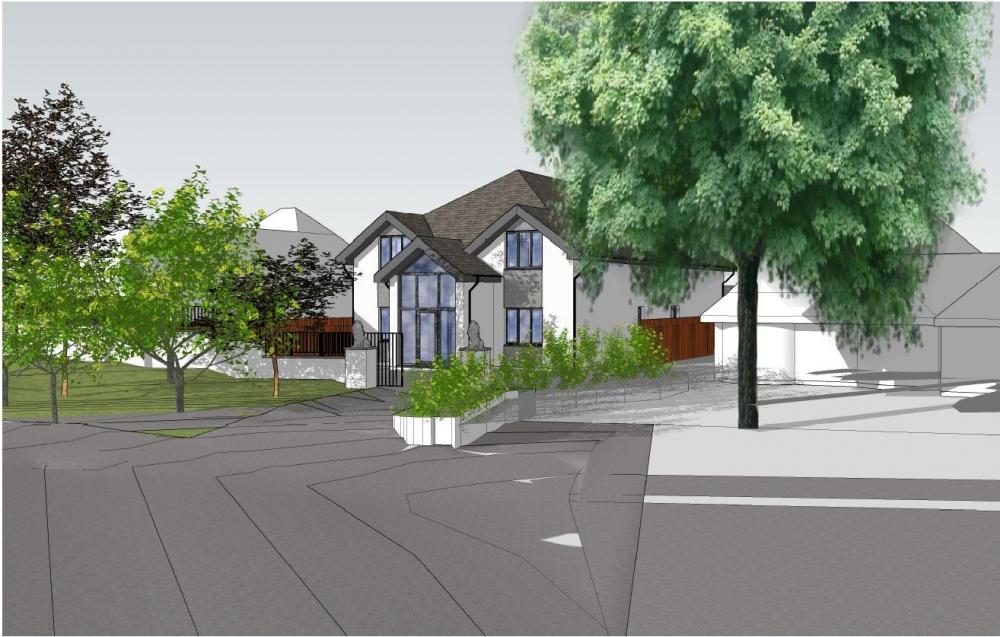
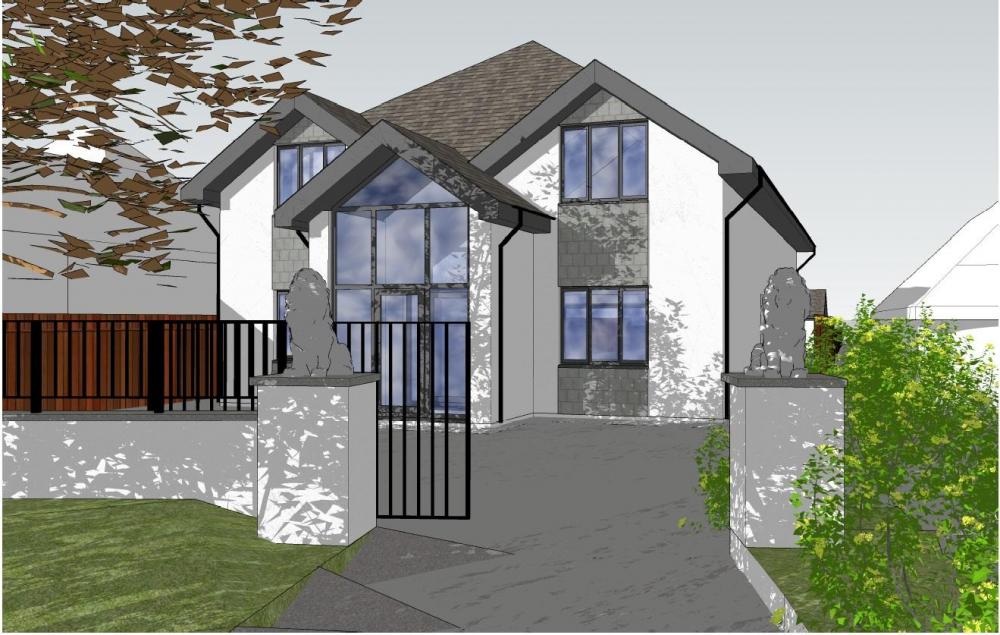

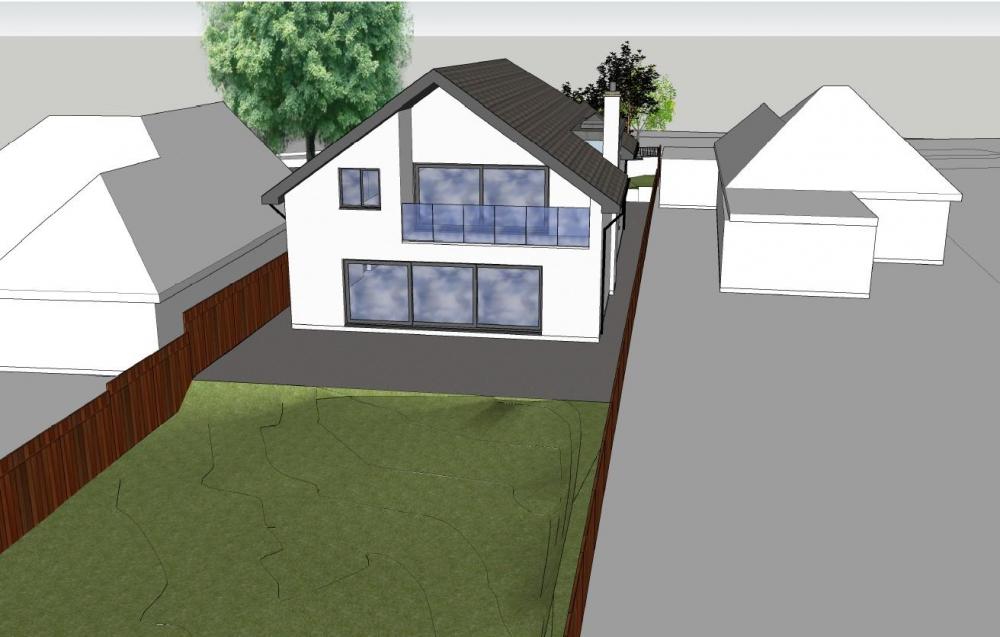

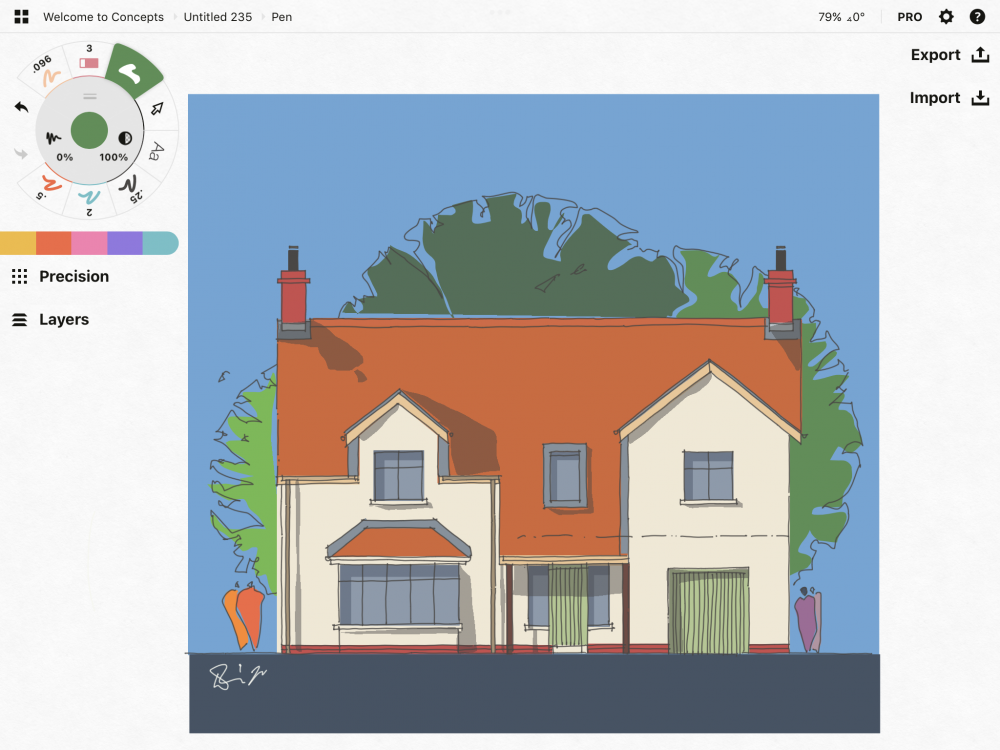

.thumb.jpg.bac90f3bbf6868cf2118d010d936c99d.jpg)




